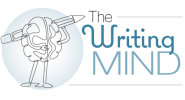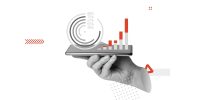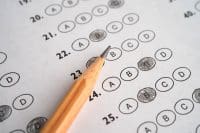As nurses, we routinely use quality-improvement tools such as the plan-do-check-act cycle to refine our practice to benefit patients. Proofreading is a quality-improvement tool for our writing efforts, but it’s a step that frequently receives only cursory attention. After all, we worked hard in crafting our article, writing and editing to make our points clear. After all that hard work, the temptation is to submit the article and be happy we can strike off one task from our to-do list.
But taking time to proofread your article can enhance the likelihood that it will be accepted for publication. Proofreading allows you to catch grammatical and other errors, which can distract a reviewer or editor from your message. Here are a few strategies for effective proofreading.
Set up for success
Waiting a day or two after completing your article before proofreading it allows you to come at it with a fresh perspective. You’ll want to choose a location that works best for you. Some people need total quiet, while others prefer at least some background noise.
You can proofread on a computer screen or on paper. Proofing onscreen allows easy access to features such as spellcheck, and Zaman writes that it’s easier to catch subtle differences in line and paragraph spacing. You might want to do your initial proof on a screen, then print out the article for a final proof. I normally only proof on my computer screen, but if the article contains tables with many numbers, I’ll also print them out to double check them against the raw data.
It’s a good idea to take a few breaks along the way, particularly if your article is a long one.
Have a system
You may find it helpful to start with the title and headings (the big picture), then read each section in detail. Check the article twice. The first time, start from the beginning; the second time, start at the end and read each section in reverse order. This second pass will help you catch errors that you missed as your eyes became tired during the first read through.
One of my previous bosses claimed that errors cluster, meaning that if you find one error, another is likely to be nearby. I’ve not seen any scientific evidence for this, but I’ve encountered it often enough in practice that I usually double check any section I find an error in.
Use a checklist
Checklists have become an essential part of our practice, from preparing a patient for surgery to operating a complex piece of equipment. They help us avoid missed steps that then result in error.
A proofing checklist functions in the same way: It helps you avoid missing key items. Here is a sample checklist:
- Are titles and subheads spelled correctly?
- Are all organization names spelled correctly?
- Are all names of people spelled correctly? Is your biography correct?
- Is the sequence of tables, figures, and other graphics correct?
- Is each graphic referenced in the text (per author guidelines)?
- Are captions accurate, and are people identified correctly?
- Are photo credits included where needed?
- Are tables aligned properly?
- Is the math correct in all calculations, and are all numbers correct? (If numbers won’t add up to 100%, be sure the reason is stated, for example, survey results have been rounded.)
- Are acronyms spelled out the first time they appear in text?
- Are terms consistent? (For example, “healthcare” and “health care” are both acceptable but pick one and use it consistently. Before picking one, check the publication’s style guide for preferences.)
- If a source is cited within the text, is the complete reference to the work also provided (per the publication’s style guidelines)?
If your article is accepted for publication, you may receive a PDF of the layed out article, which shows how it will look when published. If so, be sure to check the following:
- Are pages numbered sequentially?
- Is the information in the footer (bottom of page) correct? (The footer typically contains the journal title, volume, and issue date.)
- If the reader is referred to another page, is the page number correct?
- Are the fonts consistent?
- Are headings of different sections the right size and are sizes consistent? (During the layout process, what should be a subheading may inadvertently be switched to a main head and vice versa.)
- Are special characters such as an alpha or beta symbols formatted correctly? (Occasionally these characters don’t display correctly.)
- Are figure and other captions complete? (Sometimes they can get cut off when imported into the layout program.)
- Are online links in the article correct?
- Are titles in references italicized per the journal’s style? (Sometimes italics are “lost” when going from document to layout.)
Use spellcheck, but know its limitations
I’m frequently amazed at the number of submitted articles with typos that would have easily been caught by spellcheck. Don’t miss this step. On the other hand, know that spellcheck isn’t infallible. For example, it won’t catch errors such as “pubic” vs. “public” since both are spelled correctly. In addition, the grammar check isn’t totally reliable; it sometimes suggests inappropriate changes. For example, in checking this article, one suggestion was to add a comma after “article” in “Are online links in the article correct?” which would not be correct.
However, the benefits far outweigh the drawbacks, so run a spellcheck as the last step of your proofing process.
Ready to go
Once you’ve finished proofing your article, you’re ready to submit, confident that you’ve done all you can to boost the chances of your article being published.


I’ve been a full-time professional nurse writer and editor for many years, and that doesn’t count the writing I did as I fulfilled my nursing roles in clinical, research, education, and management. My passion is helping nurses share their expertise through the written word, including, but not limited to, publication. Writing can be scary and intimidating. I hope to make it less so and to help you develop your writing skills the same way you’ve developed your nursing skills.
Whether you’re considering your first or your 50th publication, want to contribute to your organization’s newsletter, or crave to be a better communicator online and in print, I hope you’ll find what I write helpful. The nurse publishing colleagues I’ve learned from over the years (many of whom are contributors to my book) may not be listed by name, but I’m grateful for their willingness to share. In that spirit, I’m looking forward to sharing with you! If you have feedback, feel free to email me at csaver57@gmail.com.
References
Gastel B. Editing and proofreading your own work. AMWA. 2015;30(4):147-51.
Zaman N. Honing your proofreading skills. Medical Writing. 2018;27(3):6-9. journal.emwa.org/editing/honing-your-proofreading-skills
Saver C. Writing skills lab. In: Saver C. Anatomy of Writing for Publication for Nurses. 4th ed. Indianapolis, IN: Sigma Theta Tau International; 2021; 81-91.


















